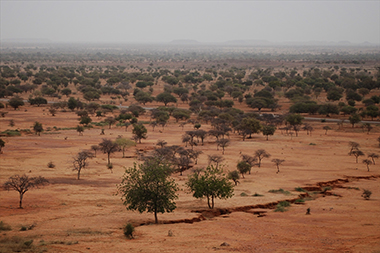Trees are a cornerstone of global ecosystems. They provide everything from clean air and water to food and shelter and habitat for humans and many other species of plants and animals. Trees also help prevent soil erosion, and play a key role in mitigating the effects of global climate change. To mark the United Nations World Environment Day (June 5), here are some ideas about preserving and promoting increasingly endangered tree cover.
Tree planting has its role to play, but the best way to establish and replenish vast areas of woodlands is to allow trees to regenerate naturally. This technique has been used to enrich millions of hectares in Africa, including degraded communal lands in Ethiopia and farmlands in the West African parklands of Niger. Natural regeneration relies on seeds or other living tissue already present in the soil, producing species that are mainly indigenous and appropriate to the local environment. It also eliminates the need for water for nursery production and labor for planting, which are particularly limiting in drylands.
Property rights and collective action play important roles in shaping incentives for farmers and communities to regenerate farms and forests. Most types of trees take a few years to grow and provide benefits. A farmer or other land manager without secure long term rights to land will be hesitant to invest much labor, capital or set aside land for trees. There is evidence to show that densities of trees are much higher on land owned than on land rented. Furthermore, when governments provide increased land tenure security to farmers, as with land certificates in Ethiopia, or tree tenure security, as with non-application of forest codes in Niger, farmers respond positively through more tree planting or regeneration.
Collective action is also important for achieving increased tree cover at scale. The Ethiopia regreening project succeeded thanks to the creation of thousands of so-called exclosures, which required communities to cooperate to protect the land from uses that would threaten restoration, such as grazing and harvesting of green wood. People then worked together to identify alternative sources for their natural resource needs. Similarly, young trees planted or emerging on farms are vulnerable to browsing by animals and fires. If each farmer needed to protect each tree from these threats, the costs would be overwhelming. It is far better for communities to adopt rules to protect young trees and to provide compensation to farmers who lose trees on their own land.
The recent successes in Ethiopia and Niger show that property rights and collective action challenges can be overcome. However, vast areas around the globe remain degraded or have very low tree cover and studies continue to point towards weaknesses in land and tree governance institutions.







